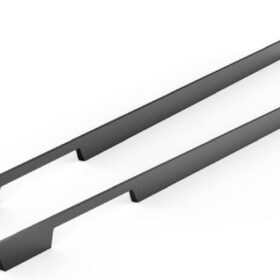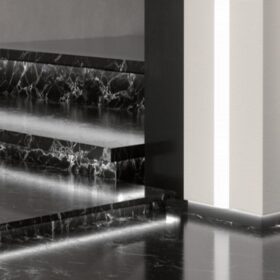Understanding the Technology Behind Horizontal Cabinet Handles
Introduction
Horizontal cabinet handles have become increasingly popular in modern kitchen and home designs due to their sleek and minimalist aesthetics. While these handles may appear simple, there is sophisticated technology behind their design that ensures both functionality and durability. Let’s dive into the intricate details of horizontal cabinet handles to gain a deeper understanding of their inner workings.
Materials and Construction
Metals
Horizontal cabinet handles are commonly crafted from various metals, including stainless steel, aluminum, and brass. These materials are known for their high strength, corrosion resistance, and longevity. Stainless steel, in particular, is a popular choice due to its exceptional resistance to everyday wear and tear.
Wood
Wood handles offer a warm and natural aesthetic, complementing traditional or rustic designs. Hardwoods, such as oak and mahogany, are often used for their durability and resistance to warping. However, wood handles require regular maintenance and protection from moisture to maintain their integrity.
Composite Materials
Composite materials, such as thermoplastics and thermoset plastics, provide an alternative to traditional materials. These materials offer a lightweight, cost-effective, and versatile option, allowing for a wide range of colors and finishes. They are also resistant to moisture and chemicals, making them suitable for high-traffic areas.
Mounting Systems
Screw-Mounted
Screw-mounted handles are the most common type of mounting system. They utilize screws to attach the handle directly to the cabinet door or drawer. This method is simple to install and provides a secure hold, but it requires precise alignment and may leave visible screw heads.
Concealed-Mounted
Concealed-mounted handles are attached using hidden brackets or clips. This system offers a sleek and seamless appearance, concealing the mounting hardware. However, the installation process can be more complex and may require specialized tools or professional assistance.
Surface-Mounted
Surface-mounted handles are attached to the surface of the cabinet door or drawer. This method allows for the use of decorative or oversized handles without the need for complex mounting systems. However, surface-mounted handles may protrude slightly and could potentially be more susceptible to accidental damage.
Design Considerations
Ergonomics
Horizontal cabinet handles should be designed for ease of use and comfort. The shape, size, and placement of the handle all play a role in ergonomics. Handles with a wide, comfortable grip and an appropriate distance from the surface make for a more enjoyable user experience.
Aesthetics
Horizontal cabinet handles come in a wide variety of styles and finishes. From brushed nickel to matte black, from traditional to contemporary, there is a handle design to complement any kitchen or home decor. The choice of handle can significantly impact the overall aesthetic of the space.
Durability
Durable horizontal cabinet handles are essential for maintaining their functionality and aesthetic appeal over time. Look for handles made from high-quality materials with robust construction. Consider the frequency of use and the potential impact on the handles before making a selection.
-
2024-11-29Top Trends in Modern Kitchen Cabinet Pulls for 2024
-
2024-11-28The Ultimate Guide to Modern Kitchen Cabinet Pulls- Materials, Styles, and Tips
-
2024-11-27Elevate Your Kitchen Design with These Must-Have Modern Cabinet Pulls
-
2024-11-26Sleek and Stylish- The Best Modern Kitchen Cabinet Pulls for a Contemporary Look










